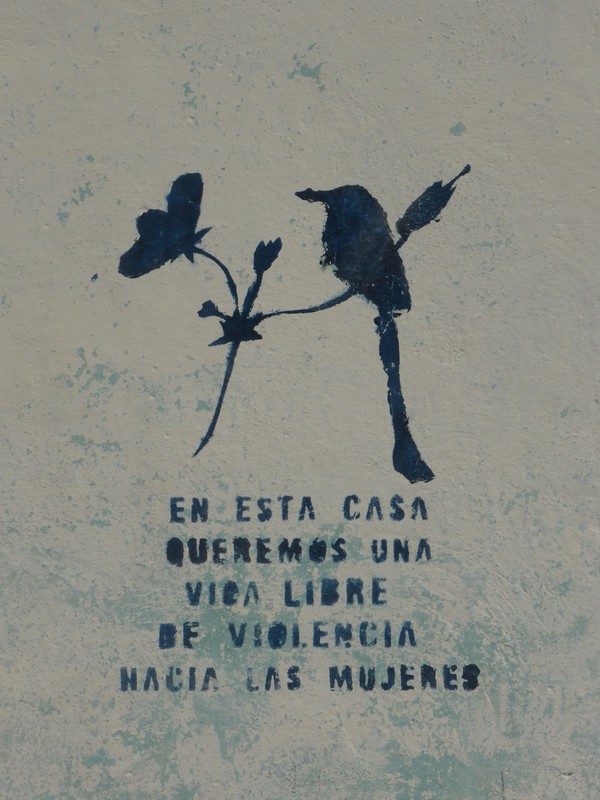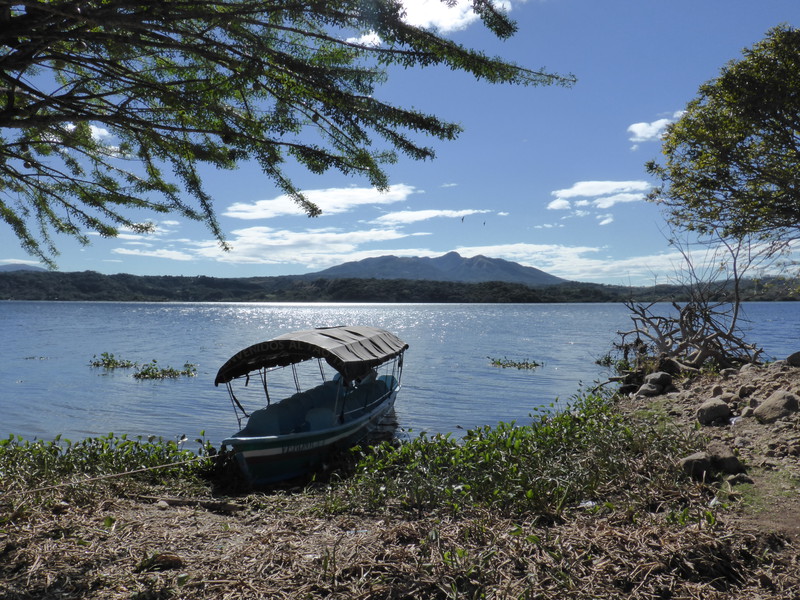
If you're looking for a poster child for the progress that El Salvador has made since the end of the civil war, then Suchitoto is a pretty good choice. The town has long been regarded as the country's cultural capital, and even today its influence is felt far and wide. In recent times, the town's recycling system has spread across the country, so you now see separate bins for plastic, aluminium and organic material everywhere; and Suchitoto's women's groups are helping to nudge the country along the long road to equality, as can be seen in the stencils sprayed on many of the town's buildings that declare, 'In this house we want a life free from violence against women.'

Perhaps this strong cultural identity is one of the reasons that Suchitoto manages to take the legendary Salvadoran friendliness to new levels, because unlike Santa Ana, the town doesn't shut down at night. Instead children play in the streets after dark and locals sit outside their houses, barbecuing meat and soaking up the still, night air. As you walk around town, everyone says hello, from the family next door to the gun-toting security guards, and you get the feeling that they're genuinely pleased to see you. Comparatively few visitors make it to this part of northern El Salvador, so the town doesn't suffer from tourist fatigue, but even so the locals go out of their way to be welcoming, and it's such a delight.

Suchitoto is lovely from an architectural viewpoint, too. The town is laid out in the familiar colonial style, with a pretty main plaza, Parque Centenario, that's surrounded by shady colonnades and an impressive white church dominating the eastern edge (though the church itself dates from after independence, so it's in the colonial style, rather than actually being colonial). Unlike a lot of squares we've seen, the park in the middle of the square is fairly open plan and you can see across from one side to the other, so it's a perfect spot for people-watching.

This is particularly true when the pupuseria on the southern edge of the plaza starts up for the day. Pupusas are a peculiarly Salvadoran delicacy, and I'm astonished they haven't caught on across the continent, as they're absolutely delicious. They're a bit like thick tortillas that are made from either rice or maize – we much prefer the rice version – and they're stuffed with a generous helping of beans (frijoles), cheese (queso), pork (chicharrón) or a combination of all three (revuelta), before being grilled on a hotplate that's lightly brushed in lard. As a hearty breakfast or a late afternoon snack, they're hard to beat, and the pupusas on the main plaza in Suchitoto were the best we tasted anywhere in El Salvador... and that's saying something, as they're a consistently good snack wherever you go in the country.
Cerron Grande Reservoir

To get to Suchitoto from Santa Ana, we teamed up with Pamela and Matteo, with whom we'd climbed Volcán de Santa Ana and explored the Ruta de las Flores. As Italians they could speak excellent Spanish – the languages are so similar that it's easy to pick up one if you already know the other – so not only did we have some excellent company for our visit, but we also had translators in tow, and that always makes life easier. The journey wasn't that straightforward, as we had to take a bus from Suchitoto to the west terminal in San Salvador, then another bus across the capital to the east terminal, and then another from the east terminal to Suchitoto; but even with our very basic Spanish, it wouldn't have been difficult to do on our own, as the people in the bus stations are so helpful and only too happy to guide you to the correct bus. But it certainly made the whole thing far less stressful, knowing that we were travelling with people who could communicate with the locals in their own language if things got too confusing; in all, it was a delight to be travelling with our Italian friends.

It also helped that the proprietor of our hostel in Suchitoto was a friendly American who was only too happy to tell us about the local attractions. For us, two options stood out: first, there was the hike into the hills around town to visit sites from the civil war; and second, there was the boat trip on the huge man-made Cerron Grande Reservoir that's about 1km from town. We figured we'd wander down to the reservoir to see what the fuss was all about, as it was too late in the day to book a civil war walk.

When I'd looked at the weather forecast for Suchitoto the day before, I'd noticed the little orange warning flag in my phone's weather forecast, but to be honest, I didn't really take it in. So when we hopped on the minibus that runs down to the lake and wandered through the small tourist complex to the lake shore, it was a bit of a surprise to be battered by gusts of wind that blew foam from the crashing waves right into our faces. This was clearly not boating weather, though the boatman who was still optimistically selling boat tours promised that it would be better tomorrow. Still, we figured we'd seen enough for one day, and after waiting for the return bus for more than an hour, we retired for a pupusa and to plan the next day.

Luckily the boatman turned out to be right, and after spending the morning booking a civil war trek for the next day, we headed down to the lake shore once more to see what we could find. There are two options for exploring the lake: the first, and most expensive, is to hire a boat for a few hours, which takes you to the various attractions round the lake from islands and waterfalls to the dam itself; and the second is to hop on the car ferry to San Francisco Lempa, which costs just one dollar. The water was still a little choppy, so we went for the car ferry, as the thought of a whole afternoon on a pitching boat wasn't that appealing.

We chose well, as the car ferry is a delightful way to cross the reservoir, with its amazing views of distant volcanoes, a nice sedate pace – it takes about half an hour for the crossing – and the added bonus of 1980s music pumping out of the speakers as you drift across to the eastern shore of the lake. And San Francisco Lempa proved to be a beautiful little village, with an attractive square at the top of a steep hill, more friendly locals and some great views east towards Volcán Santa Ana.

It was baking hot, though, so after exploring the village centre, we stopped in the shade of the main square's colonnades for an ice cream, and as we sat there slurping our exotic fruit lollies – I still have no idea what flavour mine was, though it was certainly tasty – the church bells tolled slowly and in a strangely sad manner, and after a few minutes a funeral procession walked past, with the coffin in the back of a black, gleaming hearse that led a group of mourners into the square. The mourners all took shelter in one corner of the square as the hearse drove slowly round the edge of the plaza, before it headed off downhill at walking pace, with the hearse driver waving at us with an enthusiastic grin that looked slightly out of place among the rather more sedate throng following the coffin.
On the way back, we took a private launch back to Suchitoto, as with four passengers it costs practically the same as the ferry but can do the journey in just a few minutes. That night, those pupusas tasted even better than usual...